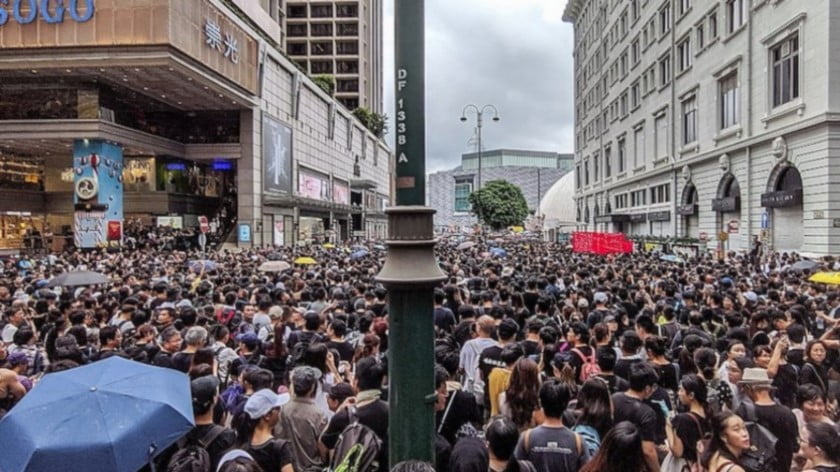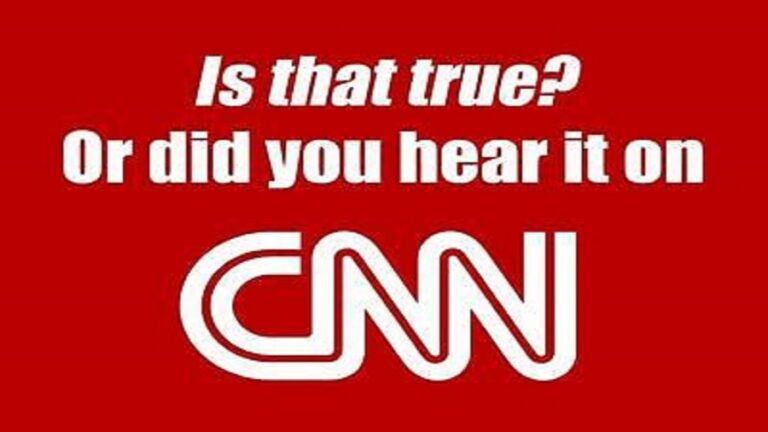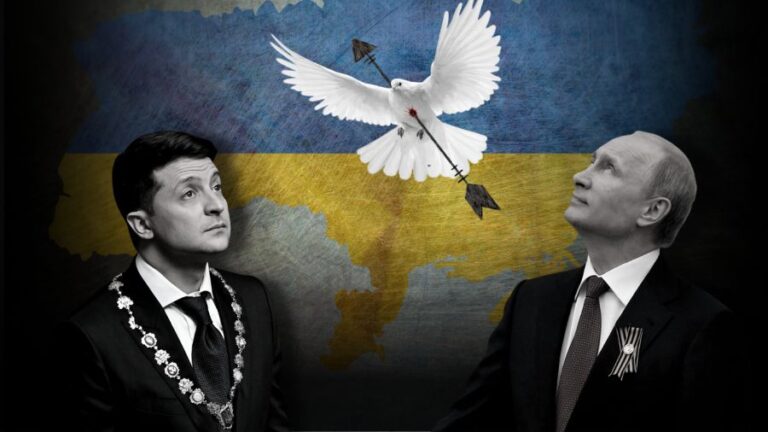It Was Inevitable That India Would Seek to Actively ‘Contain’ China
There’s no longer any doubt that India seeks to actively “contain” China after the latest incident between Asia’s two most populous countries over the weekend along the Line of Actual Control, though the resultant trajectory of tensions between them wasn’t an unfortunate turn of events like many have portrayed it as, but an inevitability for very obvious strategic reasons that were easily identifiable over the past decade but were ignored by the Alt-Media Community for ideological and political reasons.
All Is Not Well In The Alt-Media Community
The Alt-Media Community is extremely distressed after the latest incident between China and India over the weekend along the Line of Actual Control (LAC) proved beyond any doubt that the South Asian state is seeking to actively “contain” the People’s Republic. There had up until this year been the “wishful thinking” expectation that these nominal BRICS and SCO partners would join forces in guaranteeing the rise of the so-called “Asian Century” in such a way that would American influence would gradually fade across the continent. This prediction presumed that India shared the same grand strategic objectives as China, though nothing could be further from the truth since the South Asian state is doing all that it can to ensure that the US remains the undisputed hegemon of the Eastern Hemisphere. New Delhi is doing this for obvious strategic reasons that were easily identifiable over the past decade. These, however, were ignored by most observers either because they were under the influence of ideological delusions in imagining that India sincerely believed in the same model of multipolarity as they did or they feared defying the “politically correct” narrative at the time that might then have led to them being smeared by their “peers” for engaging in “pro-American wishful thinking”.
Personal Message To My Readers
I’ve been keenly aware as far back as May 2016 of the strategic drivers that made India’s anti-Chinese “containment” campaign an inevitability, which I first articulated in a two–part article series for The Duran at the time. This flew in the face of everything that practically all members of the Alt-Media Community were saying back then and thus led to vicious attacks against me in social media and the press alleging all sorts of defamatory reasons for why I’d dare talk about such a thing, but I’ve since been vindicated as I always knew would happen. As I’ve meticulously explained in the subsequent years across literally over hundreds of analyses tracking this trend in all of its prior, contemporary, and potential manifestations (all of which are accessible by simply googling my name along with keywords like “India”, “Modi”, etc.), all that I did was pick up on an observable trend and refuse to submit to the “politically correct” pressure to self-censor my views. There’s a lesson to be learned in all of this for aspiring analysts, but the point that I want to make in this present analysis is to summarize the reasons why I got it right this entire time in my work chronicling the past four years of Chinese-Indian relations. I sincerely hope that my insight will improve the quality of others’ analyses.
Confucius vs. Chanakya
Tackling the topic head-on, the irreconcilable difference between China and India is their strategic cultures that are based on two contradictory philosophies. China follows the teachings of Confucius who preached harmony and encouraged everyone to pursue mutually beneficial outcomes whereas India is guided by Chanakya who was in many ways “more Machiavellian than Machiavelli himself” and believed solely in zero-sum outcomes. As such, there’s no way that either of these two will ever enter into long-term meaningful agreements of significance with the other so long as they continue to practice their respective philosophies. The only way in which conflict could be avoided is if one of them changed their strategic culture, which doesn’t look likely to happen anytime for the foreseeable future. India’s previous pretense of friendly outreaches to China was nothing more than a Chanakya-inspired ruse to deceive the People’s Republic until the South Asian state became strong enough to seriously oppose it. India was never sincere in wanting truly strategic relations with China, but it gave off the impression of desiring such since it thought that it could trick its counterpart and possibly influence it into compromising on its interests by engaging in unilateral concessions for “peace”.
The CPEC Game-Changer
China, true to its Confucian philosophy, continued to engage India in pursuit of its mutually beneficial vision of bilateral relations, though it was continually rebuffed since New Delhi repeatedly declined joining Beijing’s Belt & Road Initiative (BRI). About that, this global network of infrastructure projects and other connectivity-related investments is intended to create a “Community of Common Destiny” where all countries will eventually enter into relations of complex economic interdependence with one another, which China believes will serve as a powerful deterrent to any of them entering into conflict with one each other out of fear of jeopardizing their own interests in the process. BRI’s flagship project is the China-Pakistan Economic Corridor (CPEC), which pivotally provides the People’s Republic with reliable non-Malacca access to the Afro-Asian (“Indian”) Ocean through which most of its trade with Europe, the Mideast, and Africa traverses. This game-changing project aims to prevent the US from ever blocking free access through those straits and thus choking the Chinese economy. It was also game-changing in more than just that way, however, since it inadvertently conformed to Indian decision makers’ Chanakya-influenced paranoia about so-called “Chinese encirclement”.
From “Multi-Alignment” To “US-Alignment”
India had up until that point made a huge deal about its policy of “multi-alignment”, which was nothing more than a euphemism for moving closer to the US under the cover of “balancing”. After the announcement of CPEC in 2015, India began to pay less importance to keeping up its narrative deception and thus started to pivot more confidently towards the US, thus transforming “multi-alignment” into “US-alignment” like I knew was bound to happen this entire time due to its Chanakya philosophy. The first real step that it took in this direction was to seal the “Logistics Exchange Memorandum Of Agreement” military logistics pact with America in 2016, the run-up to which inspired my two-part article series for The Duran that was earlier hyperlinked to this analysis. I realized that India was serious about actively “containing” China in the near future since it decided to invite the US military to South Asia under the pretext of “military logistical” reasons. It therefore followed that its cooperation with China in BRICS and the SCO would soon flounder and become nothing more than mostly meaningless symbolism. I then began to suspect that India’s intention in previously keeping up the pretense of friendly outreaches to China through these institutions was really just to function as a pro-US Trojan Horse.
Keeping The Kremlin Out Of The Loop
It should be said that India did a fairly decent job of tricking even its closest partners apart from its American one that it always aspired to ally with. The Kremlin was kept entirely out of the loop and feed a steady stream of false reassurances about India’s intentions through official statements and so-called “track II diplomacy” via expert interactions. To India’s credit, it read Russia very well and realized what I only later came to acknowledge last month in my article constructively criticizing its grand strategy, namely that a post-Crimea hubris has blinded its decision makers, expert community, and media from a plethora of latent threats. In the context of the present analysis, this is India’s game-changing pivot towards the US, which has far-reaching consequences for Eurasia across the rest of this century. Russia thought that it could use its influence in BRICS and the SCO to ensure that both of its Asian partners would always remain on excellent terms with one another, but it ignored the very obvious fact that India didn’t appreciate Russia’s “balancing” act and instead wanted the two to team up in “containing” China within these institutions. Russia didn’t bite the bait even though it’s nowadays backtracking on BRI for its own reasons, which is why India decided to accelerate its pro-American pivot.
Divide, Rule, Then Rise?
It’s clear that the US is exploiting India as its wedge for dividing and ruling Eurasia in order to indefinitely prevent the emergence of the “Asian Century” which threatens the continuance of the 20th century’s American one, but it must be said that India is willingly going along with this because it sincerely believes it to be in its best interests to do so. This doesn’t make sense to those in the Alt-Media Community who are convinced that such a strategy is incompatible with India’s stated desire to become a global power, but the two aren’t mutually incompatible in a theoretical sense. India’s decision makers believe that some semblance of multipolarity is inevitable but that the ideal model is one where the US becomes “the first among equals” and then takes a leading role in gradually reforming the international system in the face of this irreversible trend. I explained the means through which America aims to do this in my January 2015 analysis for Sputnik titled “Lead From Behind: How Unipolarity Is Adapting To Multipolarity”. Applied to India, this takes the shape of America assisting its hemispheric expansion of influence as a “reward” for “containing” China on its behalf. India doesn’t expect such support from China since its Chanakya philosophy makes it fear Beijing instead, hence why it sided with the US.
Concluding Thoughts
Practically every member of the Alt-Media Community needs to do some deep soul-searching after they were proven to have been so wrong about Chinese-Indian relations. Some were blinded by their ideologically driven expectations of imagining the inevitability of a post-American Asia while others were simply too scared of defying the “politically correct” narrative of the time and suffering defamatory smears because of it. What I’ve consistently argued over the past four years is that the real inevitability was that India would seek to actively “contain” China due to the irreconcilable contradiction between the former’s Chanakya philosophy and the latter’s Confucian one. So long as their strategic cultures continue to operate based on these diametrically opposed worldviews, there will never be truly meaningful cooperation between them in any way that threatens the US’ hegemony in Asia. India is nowadays willingly behaving as the US’ wedge for dividing and ruling Asia in exchange for America “rewarding” it by assisting its hemispheric expansion of influence, and there aren’t any credible reasons to expect it to reverse this grand strategic trajectory. As such, it’s predicted that this state of affairs will persist across the coming century, thus becoming a defining feature of its geopolitics.







